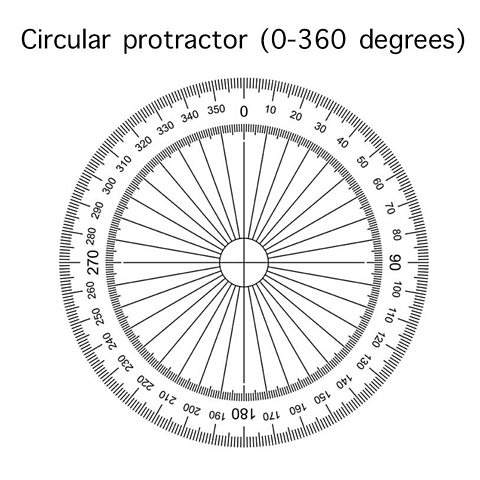You can see angles all around you; some big and some small
Just have a look at the edges of your desk; the hands of a clock or the keys on your computer. There are examples everywhere.


Angles are measured using degrees, ranging from 0 all the way to 360 degrees in one full turn. There are many different types of angles, but possibly the most easily recognisable is the right angle. A right angle is exactly Вј of a full 360 degree turn.
When two straight lines intersect each other to form a right angle, the turn is measured as 90 degrees. Just think of it as slicing a pizza into 4 equal parts; a right angle will give you one perfect slice.

As well as right angles, there are also acute and obtuse angles. An acute angle is very easy to spot; it is any angle smaller than a right angle (0-89 degrees – ah, cute!).
An obtuse angle is just as easy to identify; any angle that is bigger than a right angle but less than a straight, flat line (91-179 degrees – remember them as obese or fat angles).
Now, think back to our pizza; if we slice a pizza into five or more slices, each slice of pizza will make an acute angle, but if we only slice it into three equal parts, we will have obtuse angles.


The two lines that come together to make each angle are called arms and the common point where they meet is known as the vortex.
When two arms of an angle lie in the opposite direction, they form a straight line from where they meet at the vortex. For this reason, these types of angles are known as straight or flat angles.
Past this point and all further angles are known as reflex angles (181-360 degrees).

Practice
Can you identify and label the angles correctly in this activity?
Using a protractor
Knowing the range of each type of angle, it is possible to make an estimate of the size of turn in any given example. However, to be as exact as possible we need to use the correct tool, in this case, a protractor.


A protractor acts in a similar way to a ruler in that it allows you to both measure and draw accurately. The two most popular types are the semi-circular (0-180 degrees - pictured above ) and a circular (0-360 degrees - pictured right) . They often have two sets of numbers going into opposite directions: 0В° to 180В° and 180В° to 0В°. So, you need to be very careful which scale you use when measuring the angles. With a protractor, the angles of any shape can found where two lines meet and form a corner. The shapes themselves can also be identified from this by matching the angles to the shape properties.

For example, an acute triangle will have three angles less than 90 degrees, where as an obtuse triangle will have one angle greater than 90 degrees.
Lines and angles are involved in every aspect of our daily life. Can you recognise any around you now?
More on Lines and angles
Find out more by working through a topic
- count3 of 3

- count1 of 3
